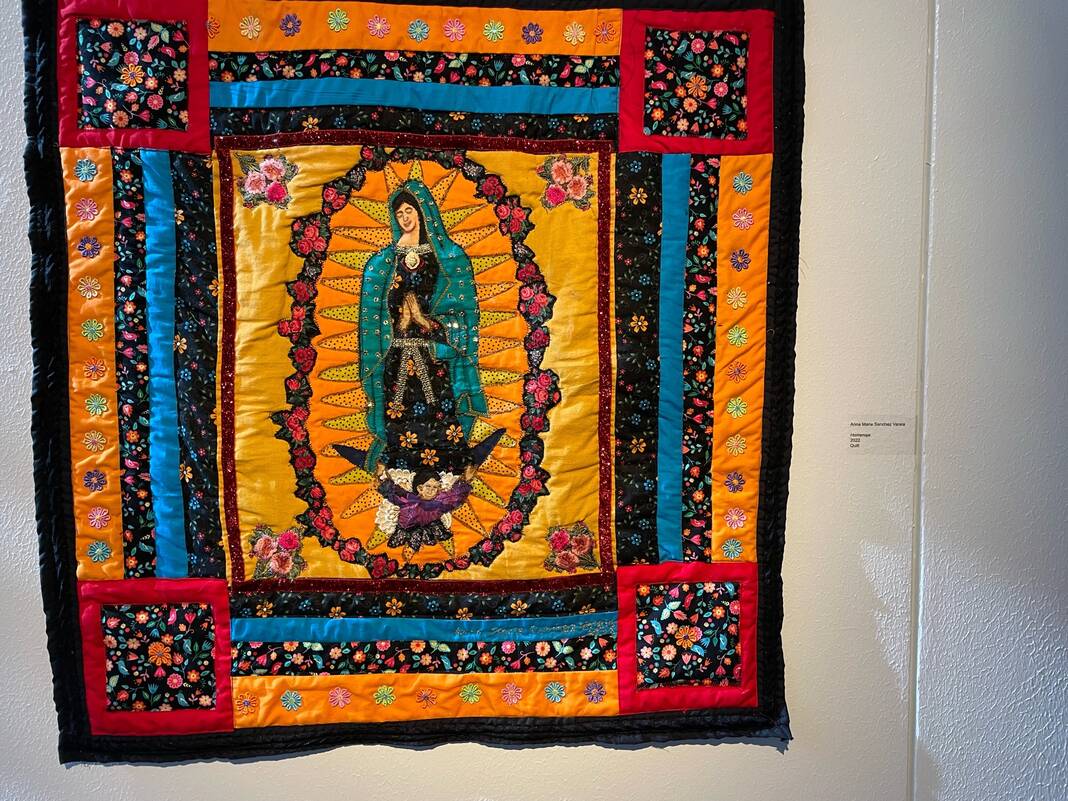SAN BENITO — She looks pensively with folded hands, sun rays spreading from her emerald green cloak and toward the Castilian roses that seemed to explode into luminous blossoming.
Nearby, another piece in the exhibit “Castilian Roses in December” at the San Benito Cultural Heritage Museum depicts La Virgen de Guadalupe as an indigenous woman with broad face, a familiar smile and the native complexion that served a powerful purpose for many.
Such was the bridge connecting the religion of Spanish conquerors to the indigenous gods of the Aztecs.

She appeared to Juan Diego in 1531, affirming to native people her adoration and making possible mass conversions to Christianity.
“Castilian Roses in December is a reference to the apparition of La Virgen de Guadalupe with the Castilian Roses,” said Aleida Garcia, director of the museum at 250 E. Heywood.
“Given that theme and given that story, we have the artist use that legend to inspire and be inspired by that, and that we would like a response from that story,” Garcia said. “So that’s where it originates.”
Catholics celebrated the feast day of La Virgen de Guadalupe on December 12, but the faces, flowers and radiance – the endless variations of her apparition in the museum – bear clear witness that she is still celebrated by many.
There’s an intriguing use of the pointillist style in which the apparition is surrounded by a sort of cosmic array of images; another work uses stained glass to communicate La Virgen’s purpose and passion; still another artist uses yarn in geometric yellow, red and green patterns to create a rather unique piece.

A sculpture reveals the geometric patterns and colors so relevant of Aztec motif and Mexican hues. Mario Godinez created the image after seeing a sculpture of Coatlicue at the Museum of Anthropology in Mexico City.
The Encyclopedia Britannica describes Coatlicue as the “Aztec earth goddess, symbol of the earth as both creator and destroyer, mother of the gods and mortals.” This spiritual image intertwined with the benevolent Virgin Mary manifested in La Virgen de Guadalupe makes for a power piece.
“This painting, when it’s completely dark and there is no light, it stays glowing because it has fluorescent paint,” said Godinez, an art teacher at Harlingen High School South.
“And also the blacklights, the colors of the sculpture will change,” he said. “So you might have noticed if the sculpture is on, on the edges where that blacklight is hitting it, you can kind of see like the colors change and glow a little bit more. The glow in the dark and the blacklight also symbolizes a whole different view. When it’s dark, this keeps on living in the darkness.”
Gaby Rico’s painting depicts strong sun rays shooting away powerfully from a Virgen de Guadalupe with eyes closed in prayer and peace as if praying for the world. She wears a lovely green cloak and holds the Castilian roses in her hands.
“As a kid I grew up being Catholic,” Rico said, “but right now I don’t follow that religion, but I respect it a lot, and then it’s like an honor to be able to manifest my gratitude to everyone through her.”
She used different media to compose her work.
“I feel more free when I work with mixed media,” Rico said. “I feel like a kid playing with a new toy. I love working with mirror and glass. I think when you can stand in front of the piece you might see yourself reflected in her shine, and I want people who look at the piece to feel happy and excited to see her and just to feel the glow.”








